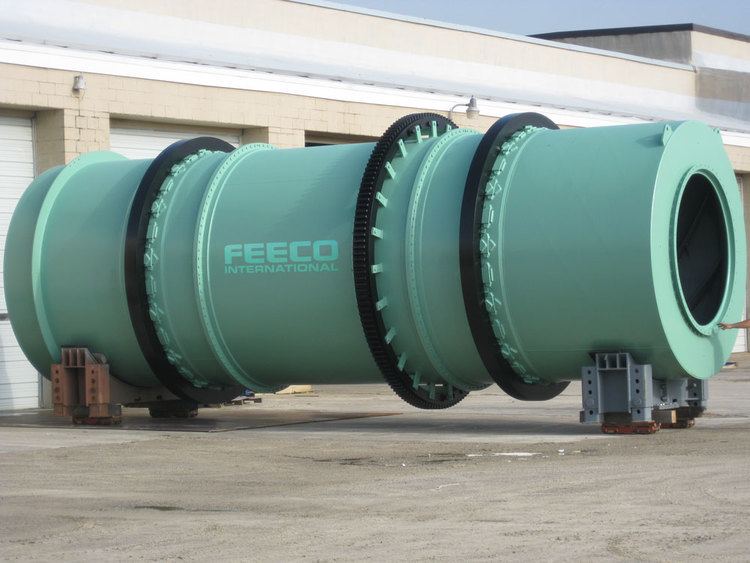 | ||
A sectional cooler is a rotary drum cooler used for continuous processes in chemical engineering.
Contents
Construction
Sectional coolers essentially exist of a turning rotor which is mostly driven via chain. At the ends of the rotor are stiff cases for product feed and outlet. Depending on the size of the cooler the rotor is pivoted either at the ends of its own shaft (shaft cooler) or is supported on running treads, as it is typical for rotary drums.
The interior of the rotor exists of several section-shaped chambers which are arranged like cake pieces around a central hollow shaft. This arrangement is completely surrounded by a water shell. In the section-shaped chambers are conveyor elements. According to requirements this can be shovels, chains or similar. According to requirements sectional coolers are built with diameters between 0.8 and 4 m and lengths from 3 to 30 m.
Function
Sectional coolers work with indirect water cooling. The cooling water reaches the space between the several chambers by an internal central hollow shaft. It circulates between and around the chambers and leaves the cooler through an external central hollow shaft. The product which is to cool usually falls directly into the product feed housing. By the rotary movement and the conveyor elements the product is conveyed to other end of the cooler. The rotation causes a permanent mixing of the product in the chambers and hence a good heat transfer.
Applications
In sectional coolers every free flowing bulk material can be cooled. They often can be found after rotary kilns in calcination processes or similar. Their intended purpose is usually to reduce the product temperature as far that it can be handled with other apparatus (conveyors, mills, etc.). Often the cooling itself also is an important part in the production process. Typical products are, e.g. calcined petroleum coke; zinc calcine; soda ash; pigments and more. The entry temperatures of the products can reach up to 1400 °C.
